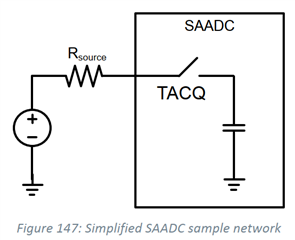Hi,
We are using the nRF52840 SoC.
- The following image is taken from the datasheet:

It shows a Gain block before the SAR core
a. Does the Gain block serve also as a buffer?
b. What is the Gain BW?
- The following image describes a simplified SAADC sample network:

- Does the Rsource external to the nRF52840 SoC?
Thank you


